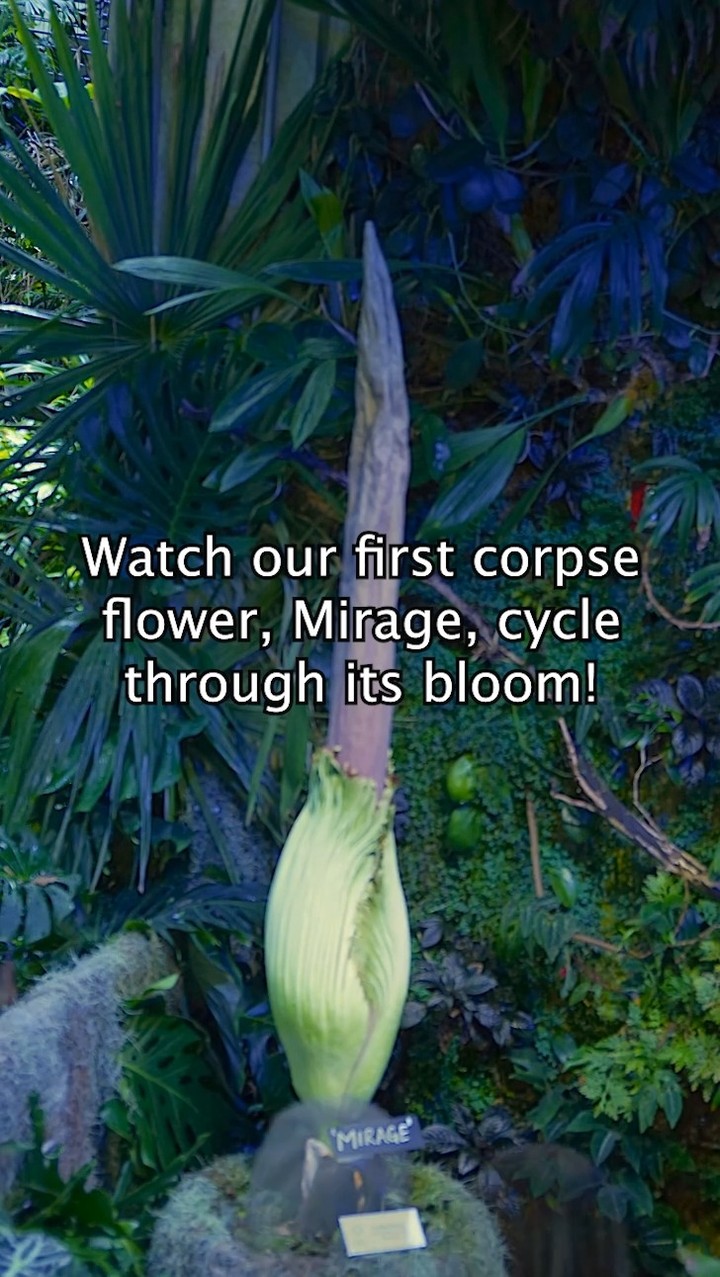– The biology and rarity of Corpse Flower (Amorphophallus titanum) blooms
– The significance of Mirage’s Bloom in botanical gardens and ecological education
– Strategies for zoo and botanical garden management to engage the public during rare events
– The role of the Corpse Flower in its native habitat and the conservation efforts to protect it
– How these rare botanical spectacles can inspire public interest and support for conservation
Amorphophallus titanum, known colloquially as the Corpse Flower, boasts one of the most intriguing and paradoxical appeals in the plant kingdom. This giant among flora is notorious for its infrequent and brief blooming period, accompanied by a strong odor reminiscent of decaying flesh. The last month entailed a momentous occasion for botany enthusiasts and naturalists as Mirage, a Corpse Flower housed in a botanical garden, unfurled its striking Bloom. This occurrence lasted a mere three days, yet the olfactory memory lingers far longer in the minds of those lucky enough to witness it.
Understanding the fascinating biology of the Corpse Flower begins with a dive into its lifecycle. Endemic to the rainforests of Sumatra, Indonesia, the Corpse Flower demands specific climatic conditions to thrive. It lies dormant as a large corm for months or even years before sending up a rare inflorescence or a leaf structure that can reach up to 20 feet in height. The Bloom is an evolutionary marvel, attracting pollinators such as carrion beetles and flesh flies drawn to the scent of decomposing matter.
Mirage’s Bloom did not come without significant anticipation and preparation from the botanical garden’s staff. Public insights into the cultivation practices and meticulous care required to bring the Corpse Flower to a flowering state were plentiful. This event offered an exceptional opportunity for educational programs focusing on botany, ecology, and conservation, sparking widespread public engagement. The rareness of the Bloom, happening only once every few years, intensifies the allure and enigma surrounding Mirage’s showcase.
As part of zoo and botanical garden management, staff integrate strategies before, during, and after these short-lived phenomena to maximize visitor engagement. Educational signage, interactive displays, and scheduled talks by experts capitalize on the public’s curiosity about the Corpse Flower’s lifecycle. Live video streams and social media updates can amplify reach, drawing virtual audiences who can’t experience the event in person. Mirage’s Bloom is a case study of effective public engagement around a rare botanical event, drawing diverse crowds and generating enthusiasm for plant science.
In the broader environmental context, the Corpse Flower plays a vital role in its natural habitat. Its pollination strategy’s ecological intricacies spotlight inter-species relationships critical for maintaining rainforest biodiversity. However, this captivating plant faces habitat loss, deforestation, and climate change threats. Fortunately, the global botanical garden community, including where Mirage resides, collaborates in ex-situ conservation efforts. Initiatives such as seed banking, propagation, and participation in species survival plans represent proactive steps to preserve the Corpse Flower.
The public spectacle of Mirage’s Bloom also serves as a conduit for conservation advocacy. Visitor enthusiasm can translate into support for habitat protection and environmental projects focusing on rare and endangered species. Educational outreach during the Bloom of the Corpse Flower spearheads discussions on broader conservation topics, often funneled through the narrative of this fascinating plant.
The excitement accompanying a Corpse Flower bloom presents a gateway for fostering a deeper connection between people and the natural world. Observing and smelling Mirage’s flowering provides a direct, visceral experience that can heighten awareness and provoke thought about the planet’s extraordinary biodiversity. These sensory engagements lead to lasting memories and, ideally, a sustained interest in environmental stewardship.
Mirage may have wilted for now, but the anticipation for its next Bloom underscores the enduring legacy of these botanical wonders. As the scent of the Corpse Flower dissipates, its impact on conservation awareness and botanical education imparts a lingering fragrance of curiosity and respect for the natural world. Witnessing the Bloom of Mirage isn’t merely a sensory experience – it is an invitation to appreciate and safeguard Earth’s botanical treasures.
*****
Source Description
Mirage was only in Bloom for about 3 days last month, but the stench will be sealed in our memories forever. Corpse flower blooms happen once every few years, and we’re already looking forward to the next time we’re lucky enough to experience this rare event. Did you see (and smell) Mirage in action during this first Bloom?

